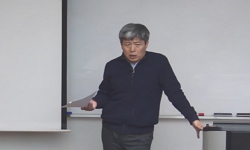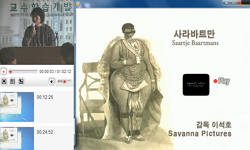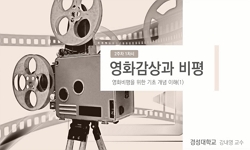2015년 개봉한 최동훈 감독의 <암살>은 일제강점기를 배경으로 한 영화로서 가장 많은 관심을 받으며 흥행에 성공했다. 그리고 뒤이어 2016년 개봉한 김지운 감독의 <밀정> 역시 다양...
http://chineseinput.net/에서 pinyin(병음)방식으로 중국어를 변환할 수 있습니다.
변환된 중국어를 복사하여 사용하시면 됩니다.
- 中文 을 입력하시려면 zhongwen을 입력하시고 space를누르시면됩니다.
- 北京 을 입력하시려면 beijing을 입력하시고 space를 누르시면 됩니다.
부가정보
국문 초록 (Abstract)
이와 같이 일제강점기를 향한 관심이 대중적 차원으로 표출되는 현상은 다양한 원인을 가지고 있다. 첫 번째는 역사영화가 점차 자유로운 장르가 되고 있다는 사실이다. 해방 이후 역사영화가 활성화되었던 1960년대까지 영화는 정부의 주도하에 국가기조를 전달하는 매체로서의 역할을 일정 정도 수행했고, 그 중에서도 역사영화는 과거 재현 과정에 당대적 의미망을 투영시킬 수 있다는 점에서 적극적으로 활용되었다. 하지만 1990년대 정치, 경제적 환경의 변화와 더불어 영화산업 역시 변화하며 특정한 목적을 띤 영화 제작은 줄어들었고, 이데올로기적 차원에서 자유로워진 역사영화는 다른 장르와 마찬가지로 다양한 시도를 통해 다시 입지를 구축하기 시작했다. 역사영화의 범주 확장은 역사를 바라보는 관점의 확장을 기반으로 이루어졌다. 아래로부터의 역사, 혹은 미시사에 대한 관심이 증가하자 역사영화에서 자주 소환되지 못했던 일제강점기는 새로운 역사관에 부합하는 매력적인 역사로 떠올랐다. 이에 더해 일제강점기에 대한 사회적 차원에서의 논의는 일제강점기와 이 시기를 재현한 영화에 대한 관심으로 이어졌다.
<암살>과 <밀정>은 이러한 상황을 기반으로 등장해 일제강점기 독립운동에 관한 관심을 환기시켰다. 더욱이 두 편의 영화는 친일파에 대한 심층적 재현으로 일제강점기 식민주체들의 관계를 더욱 사실적으로 그리고자 했다. 이러한 시도는 일제강점기에 관한 탈식민주의적 접근으로 볼 수 있으며, 두 감독은 탈식민주의적 접근과 함께 장르적 관습을 차용함으로써 두 작품을 흥행에 성공시켰다. 즉, 두 영화는 각각 케이퍼 무비와 스파이 스릴러 영화의 스타일을 통해 내러티브의 설득력을 확보하며 대중장르영화로서 성공적으로 위치할 수 있었던 것이다.
2015년 개봉한 최동훈 감독의 <암살>은 일제강점기를 배경으로 한 영화로서 가장 많은 관심을 받으며 흥행에 성공했다. 그리고 뒤이어 2016년 개봉한 김지운 감독의 <밀정> 역시 다양한 국가에서 상영되며 일제강점기에 대한 관심을 환기시켰다. 두 편의 영화와 함께 2010년대 중반 한국에서 일제강점기는 다양하게 재현되며 지속적으로 등장했다. 이로 인해 일제강점기는 한국 역사영화에서 빠질 수 없는 역사적 시기이자 사실로 위치했고, 해방 이후 간헐적이었던 일제강점기 재현은 현재까지 지속되고 있다.
이와 같이 일제강점기를 향한 관심이 대중적 차원으로 표출되는 현상은 다양한 원인을 가지고 있다. 첫 번째는 역사영화가 점차 자유로운 장르가 되고 있다는 사실이다. 해방 이후 역사영화가 활성화되었던 1960년대까지 영화는 정부의 주도하에 국가기조를 전달하는 매체로서의 역할을 일정 정도 수행했고, 그 중에서도 역사영화는 과거 재현 과정에 당대적 의미망을 투영시킬 수 있다는 점에서 적극적으로 활용되었다. 하지만 1990년대 정치, 경제적 환경의 변화와 더불어 영화산업 역시 변화하며 특정한 목적을 띤 영화 제작은 줄어들었고, 이데올로기적 차원에서 자유로워진 역사영화는 다른 장르와 마찬가지로 다양한 시도를 통해 다시 입지를 구축하기 시작했다. 역사영화의 범주 확장은 역사를 바라보는 관점의 확장을 기반으로 이루어졌다. 아래로부터의 역사, 혹은 미시사에 대한 관심이 증가하자 역사영화에서 자주 소환되지 못했던 일제강점기는 새로운 역사관에 부합하는 매력적인 역사로 떠올랐다. 이에 더해 일제강점기에 대한 사회적 차원에서의 논의는 일제강점기와 이 시기를 재현한 영화에 대한 관심으로 이어졌다.
<암살>과 <밀정>은 이러한 상황을 기반으로 등장해 일제강점기 독립운동에 관한 관심을 환기시켰다. 더욱이 두 편의 영화는 친일파에 대한 심층적 재현으로 일제강점기 식민주체들의 관계를 더욱 사실적으로 그리고자 했다. 이러한 시도는 일제강점기에 관한 탈식민주의적 접근으로 볼 수 있으며, 두 감독은 탈식민주의적 접근과 함께 장르적 관습을 차용함으로써 두 작품을 흥행에 성공시켰다. 즉, 두 영화는 각각 케이퍼 무비와 스파이 스릴러 영화의 스타일을 통해 내러티브의 설득력을 확보하며 대중장르영화로서 성공적으로 위치할 수 있었던 것이다.
다국어 초록 (Multilingual Abstract)
This phenomenon of such massive public interest on the Japanese annexation stemmed from many causes. One, historical films are becoming more of an unbound genre. Since our liberation through the 60s when the genre of historical films became more active, the industry of film making operated as a channel to deliver the keynote of the nation under the influence of the government. In the course of representing that past, historical films were vigorously utilized in the regard that they could project the semantic network of that time. However, such current diminished as the film making industry changed along with the shifting politics and economy, and by the 1990s, historical films broke free from ideological restrictions and attempted new things, just like other film genres, and succeeded.
The expansion of the category of historical films based on the expansion of awareness of our history. As the interests in the notes from the underground or microhistory increased, the subject of the Japanese annexation, which was not often mustered in historical films, became an attractive piece of history that fits our new view on history. What’s more, what used to be mere discussions on social level became a full on attraction to films on the Japanese annexation.
On the basis of these circumstances, Assassination and The Age of Shadows emerged and aroused our interest in our liberation movement during the Japanese annexation. Furthermore, these two movies represented pro-Japanese groups in Korea in depth to more realistically depict their relationship with the Japanese at the time.
These attempts are postcolonial approaches on the Japanese annexation and the two directors were able to triumph through postcolonial approach and appropriation of genre convention. In other words, each of the films captured the power of persuasion of the narratives through the style of caper movie and thriller film, respectively, and fruitfully take a position as public genre films.
Director Dong-hoon Choi's 2015 film Assassination, a movie about the Japanese annexation of Korea, was highly praised and successful. Director Jee-woon Kim's The Age of Shadows that followed the year after also premiered in many countries stirring up ...
Director Dong-hoon Choi's 2015 film Assassination, a movie about the Japanese annexation of Korea, was highly praised and successful. Director Jee-woon Kim's The Age of Shadows that followed the year after also premiered in many countries stirring up public attention on topic of the Japanese annexation. Over and above these two, numerous films appeared on the screen, in the mid-2010s, depicting the events of Japanese annexation in Korea. Due to this, Japanese annexation has become historical time and fact that cannot be detached from the historical films of Korea. And since our liberation, what used to be sporadic at best, the representation of the Japanese annexation has been ongoing.
This phenomenon of such massive public interest on the Japanese annexation stemmed from many causes. One, historical films are becoming more of an unbound genre. Since our liberation through the 60s when the genre of historical films became more active, the industry of film making operated as a channel to deliver the keynote of the nation under the influence of the government. In the course of representing that past, historical films were vigorously utilized in the regard that they could project the semantic network of that time. However, such current diminished as the film making industry changed along with the shifting politics and economy, and by the 1990s, historical films broke free from ideological restrictions and attempted new things, just like other film genres, and succeeded.
The expansion of the category of historical films based on the expansion of awareness of our history. As the interests in the notes from the underground or microhistory increased, the subject of the Japanese annexation, which was not often mustered in historical films, became an attractive piece of history that fits our new view on history. What’s more, what used to be mere discussions on social level became a full on attraction to films on the Japanese annexation.
On the basis of these circumstances, Assassination and The Age of Shadows emerged and aroused our interest in our liberation movement during the Japanese annexation. Furthermore, these two movies represented pro-Japanese groups in Korea in depth to more realistically depict their relationship with the Japanese at the time.
These attempts are postcolonial approaches on the Japanese annexation and the two directors were able to triumph through postcolonial approach and appropriation of genre convention. In other words, each of the films captured the power of persuasion of the narratives through the style of caper movie and thriller film, respectively, and fruitfully take a position as public genre films.
목차 (Table of Contents)
- I. 서론 1
- 1. 연구배경과 목적 1
- 2. 선행연구 5
- 3. 연구방법 11
- I. 서론 1
- 1. 연구배경과 목적 1
- 2. 선행연구 5
- 3. 연구방법 11
- II. 탈식민주의와 일제강점기 14
- 1. 탈식민주의와 호미 바바 14
- 1) 탈식민주의와 탈식민주의 이론 14
- 2) 호미 바바의 탈식민주의 이론 17
- (1) 호미 바바의 상호주체성 17
- (2) 호미 바바의 개념들 21
- 2. 식민지배담론과 일제강점기 23
- III. 일제강점기 배경 영화와 <암살>, <밀정> 30
- 1. 일제강점기 배경 영화의 계보 30
- 1) 1990년대까지의 일제강점기 배경 영화 30
- 2) 2000년 이후의 일제강점기 배경 영화 34
- 2. <암살>과 <밀정>의 내러티브 분석 40
- 1) <암살> 분석 40
- 2) <밀정> 분석 45
- 3. 장르영화로서 <암살>과 <밀정> 49
- 1) 케이퍼 무비(Caper Movie)와 <암살> 52
- 2) 스파이 스릴러(Spy Thriller)와 <밀정> 55
- 4. 탈식민주의적 관점에서 바라본 <암살>과 <밀정> 60
- 1) 지배자의 양가성과 지배전략 60
- 2) 식민주의자의 식민담론 내면화 65
- 3) 지배자의 감시와 전치된 시선 68
- 4) 피지배 저항세력의 저항과 현재 72
- IV. 결론 76
- V. 참고문헌 81











